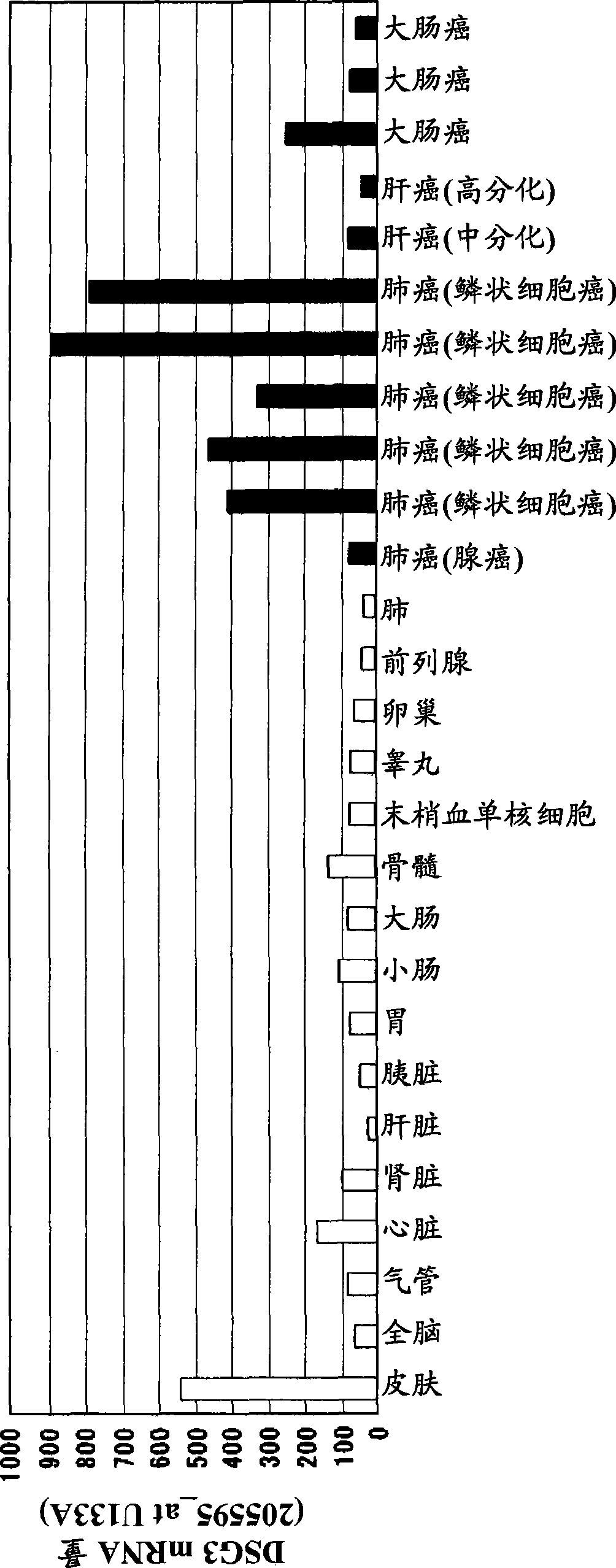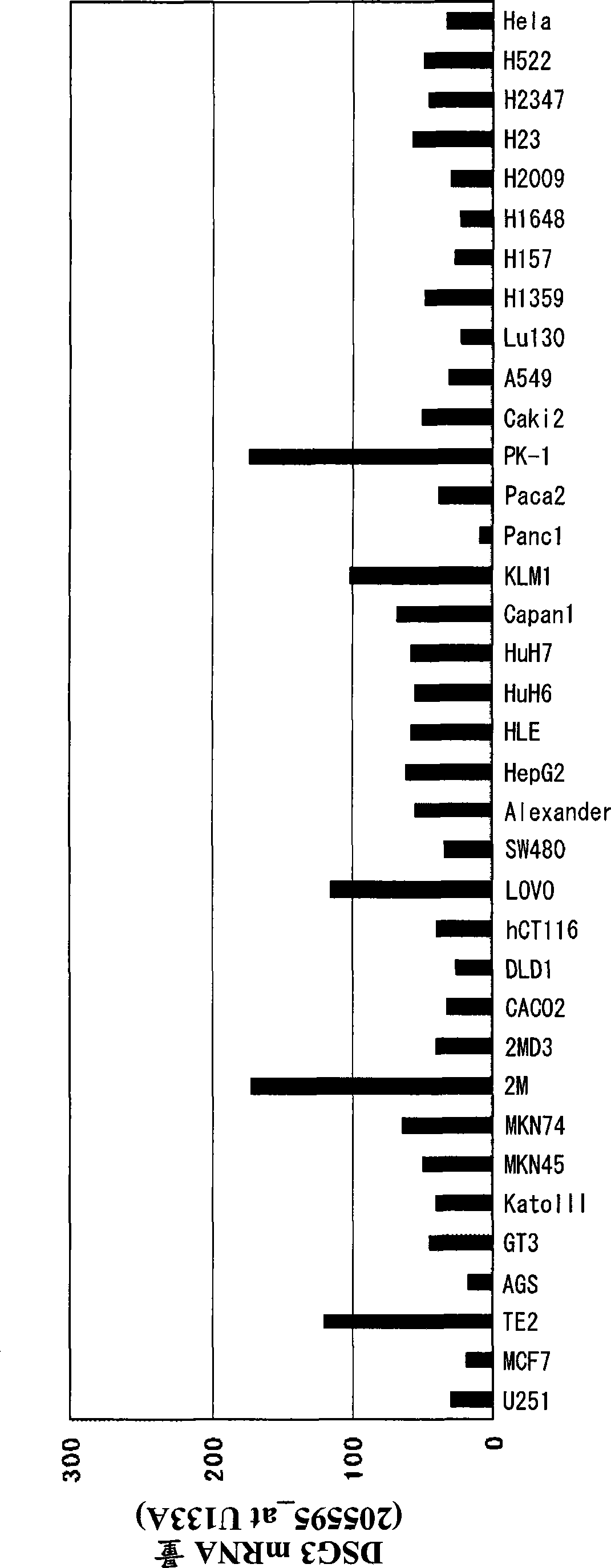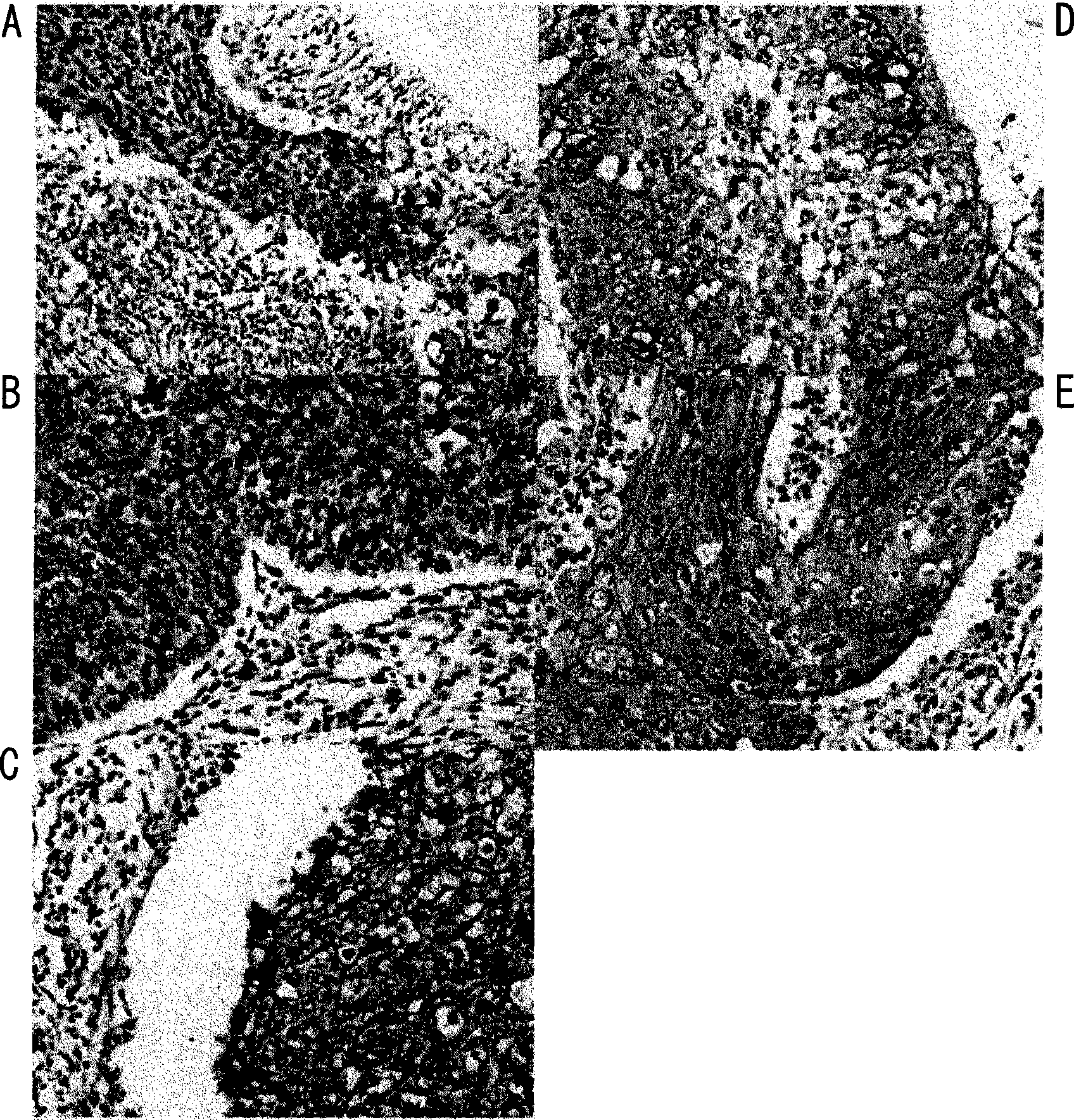Diagnosis and treatment of cancer using anti-desmoglein-3 antibody
An antibody and protein technology, applied in the direction of antibodies, anti-tumor drugs, cells modified by introducing foreign genetic material, etc., can solve the problems of low diagnostic positive rate and low disease cure rate
- Summary
- Abstract
- Description
- Claims
- Application Information
AI Technical Summary
Problems solved by technology
Method used
Image
Examples
Embodiment 1
[0473] [Example 1] DSG 3 mRNA expression analysis in various cancers
[0474] For DSG3 gene expression analysis, microarrays were used. In order to investigate genes highly expressed in cancer cells, total RNA prepared from various RNAs shown in Tables 1 and 2 and various excised tissues by ISOGEN (manufactured by Nippon Gene) according to a conventional method was used. More specifically, 10 μg of total RNA was used to supply gene chip U-133A (manufactured by Affymetrix), and gene expression analysis was carried out according to the expression analysis technical manual (manufactured by Affymetrix). In the analysis of lung adenocarcinoma and hepatocellular carcinoma, a total of 10 μg of total RNA was analyzed from 12 cases of lung adenocarcinoma and 3 cases of hepatocellular carcinoma (Table 1).
[0475] [Table 1]
[0476] organize source whole brain Clontech 64020-1 lung 1 case of clinical sample trachea Clontech 64091-1 heart Ambion ...
Embodiment 2
[0484] [Example 2] Immunohistological staining of DSG3 in lung squamous cell carcinoma
[0485] Transcription of the DSG3 gene is increased in cancer cells, particularly lung squamous cell carcinoma cells. Accordingly, in order to confirm the expression of the DSG3 protein, immunohistostaining analysis was performed.
[0486] Each test sample was prepared as a fixed paraffin-embedded specimen, cut into a 4 μm thin section, and the section was stuck on a glass slide, and then left at 37° C. for about 16 hours to make it fully dry. The section was deparaffinized by immersing in 100% xylene for 5 minutes three times, soaking in 100% ethanol for 5 minutes three times, and further immersing in 70% ethanol for 5 minutes to perform hydrophilic treatment. After washing with 50 mM TBS buffer for 5 minutes, repeated three times, the slice was treated in citrate buffer (10 mM, pH 7.0) at 120° C. for 10 minutes to activate the antigen in the slice. The section after the antigen activatio...
Embodiment 3
[0488] [Example 3] Preparation of anti-DSG3 antibody
[0489] 3-1) Cloning of full-length cDNA encoding human DSG3
[0490] The full-length cDNA encoding human DSG3 can be obtained by PCR amplification using Human Small Intestine Marathon-Ready cDNA (CLONTECH) as a template. That is, 50 μL containing 2 μL cDNA, 1 μL sense primer (SEQ ID NO.37), 1 μL antisense primer (SEQ ID NO.38), 5 μL 10×KOD-Plus buffer, 5 μL 2mMdNTPs, 2 μL 25mM MgSO 4 , 1 μL of KOD-Plus reaction solution, and carried out the PCR reaction continuously under the following conditions: the reaction cycle consisting of 94°C for 15 seconds and 70°C for 2 minutes was carried out 5 times, and the reaction cycle of 94°C for 15 seconds and 68°C for 2 minutes was performed 5 times. The reaction cycle consisting of the reaction of 94° C. for 15 seconds and the reaction of 66° C. for 2 minutes was carried out 28 times. The amplification product obtained by the above PCR reaction was inserted into pGEM-T easy using p...
PUM
 Login to View More
Login to View More Abstract
Description
Claims
Application Information
 Login to View More
Login to View More - R&D
- Intellectual Property
- Life Sciences
- Materials
- Tech Scout
- Unparalleled Data Quality
- Higher Quality Content
- 60% Fewer Hallucinations
Browse by: Latest US Patents, China's latest patents, Technical Efficacy Thesaurus, Application Domain, Technology Topic, Popular Technical Reports.
© 2025 PatSnap. All rights reserved.Legal|Privacy policy|Modern Slavery Act Transparency Statement|Sitemap|About US| Contact US: help@patsnap.com



